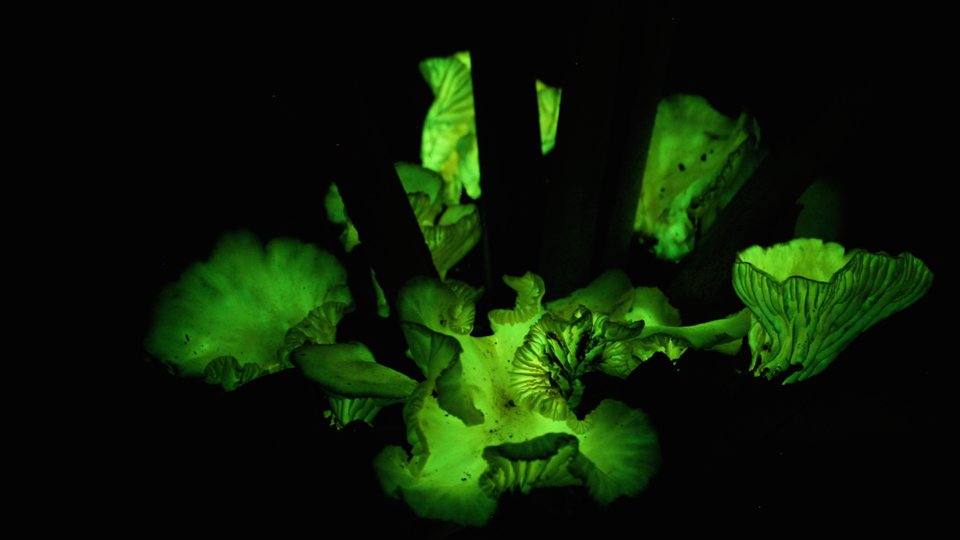Science News
Why Mushrooms Glow

Fungi are more closely related to humans than they are to plants. “A lot of people don’t like to hear that, but it’s true,” San Francisco State’s mycologist (and Academy fellow) Dennis Desjardin told us last December when we interviewed him for this video. Unfortunately, we’re not related closely enough to glow like some mushrooms…
Okay, so it’s true that only about 71 of more than 100,000 described fungal species are actually bioluminescent, but that’s more than you can say about primates. And while other organisms certainly have mastered bioluminescence—such as cephalopods, jellies, worms, and numerous insects—glowing fungi are the least understood. Although a publication in Current Biology last week might change that.
Researchers studied Neonothopanus gardneri, one of the biggest and brightest of bioluminescent mushrooms. Also called “flor de coco,” meaning coconut flower, by locals in Brazil, these mushrooms can be found attached to leaves at the base of young palm trees in coconut forests. The mushroom was originally discovered in 1840, and rediscovered about ten years ago in central Brazil by several scientists, including Desjardin and his Brazilian colleague, Cassius Stevani.
Why and how these mushrooms, and others like it, glow eluded researchers for many years. In 2011, Desjardin told SF State News, “We have no idea yet why this happens.” But Stevani and his colleagues have an explanation. “It appears that fungi make light so they are noticed by insects who can help the fungus colonize new habitats,” says Stevani of Brazil’s Instituto de Química-Universidade de São Paulo.
But most of the scientists’ work revolved around just exactly how these fungi produce light. The new study shows that the mushrooms’ bioluminescence is under the control of a temperature-compensated circadian clock. They suggest that this level of control probably helps the mushrooms save energy by turning on the light only when it’s easy to see. In fact, it was the circadian clock discovery that led the researchers to suspect that the mushrooms’ light must serve some useful purpose.
“Regulation implies an adaptive function for bioluminescence,” explains co-author Jay Dunlap of Dartmouth’s Geisel School of Medicine.
The team determined that the light emitted from the fungi attracts the attention of beetles, flies, wasps, and ants. The insect visitors are apparently good for the fungi because they spread fungal spores around. (Think of spores as fungal seeds or babies.)
The scientists say the next steps are identifying the genes responsible for the mushrooms’ bioluminescence and exploring their interaction with the circadian clock that controls them. The team is also using infrared cameras to watch the interaction between N. gardneri mushrooms and larger insects more closely.
The findings are important in understanding how mushrooms are dispersed in the environment, the researchers say. That’s key because mushrooms such as N. gardneri play an important role in the forest ecosystem as decomposers. “Without them, cellulose would be stuck in its form, which would impact the whole carbon cycle on Earth,” Stevani says. “I dare to say that life on Earth depends on organisms like these.”
Now that’s a relative we can all be proud of!
Image: Michele P. Verderane/IP-USP-2008